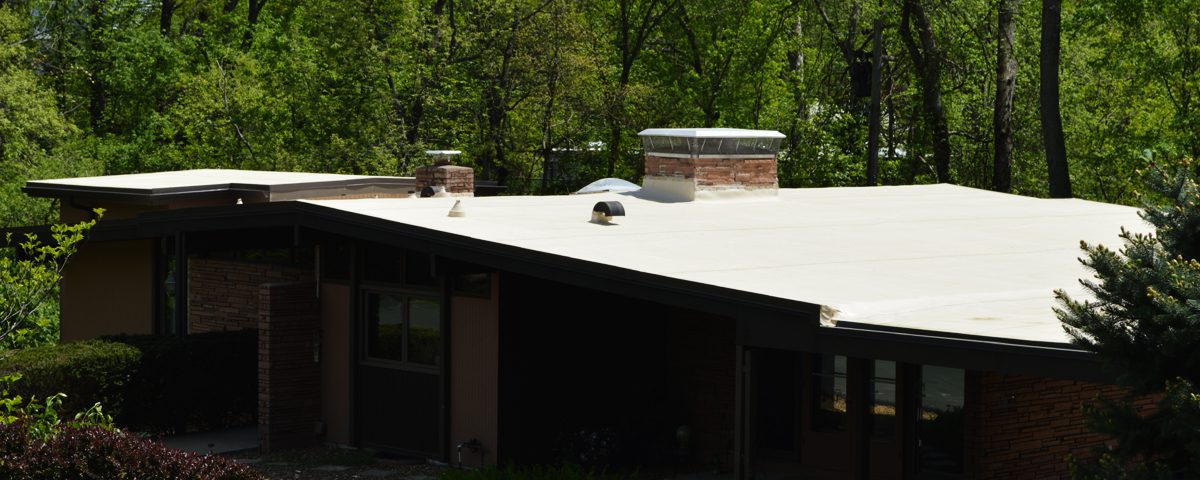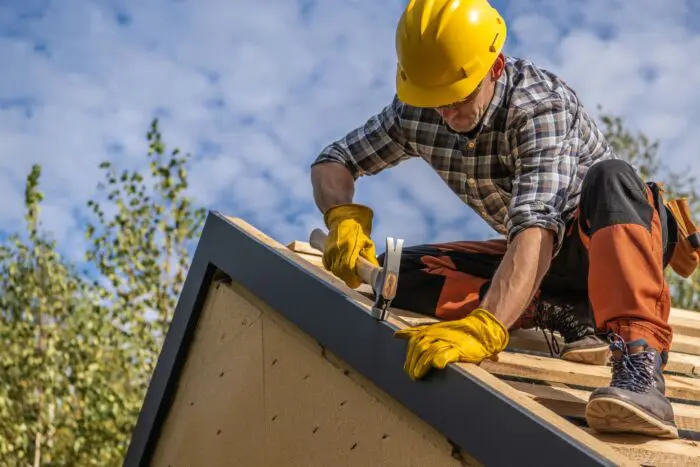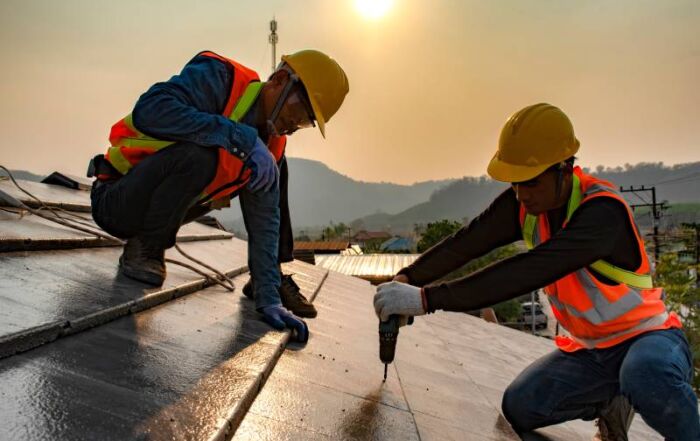
One of the most common questions roofing contractors hear when discussing a new flat roof system with customers is, “should I install a TPO flat roof?” There are several reasons why TPO roof installation is a popular option, and understanding these can help you decide if it’s the right choice for your project.
What Is a TPO Roof?
TPO is an acronym for Thermoplastic Polyolefin. TPO roofing systems are heat-weldable rubberized roofs. TPO roofs are known for their bright white energy efficiency and UV-reflective characteristics along with their ponding water resistance and wind uplift resistance. Another distinguishable characteristic of TPO roofs is that they are single-ply roofing systems, meaning the TPO is a single roofing membrane system and the TPO is the lone water barrier of the roof.
Typically, TPO roofing systems are installed on commercial or industrial buildings, as the standard width of the TPO rolls are 10 feet vs. the standard 4 foot width of the built-up roofing rolls. TPO can be installed on residential roofs as well, but some manufacturers will only provide warranties on commercial or industrial buildings.
Warranties for TPO roofing systems range from 20 to 30 years, depending on the manufacturer and installed thickness of the TPO membrane. The standard TPO membrane is 60 mils thick, whereas the upgraded TPO membrane is 80 mils thick.
The Benefits of TPO Flat Roofs
TPO is a popular choice for flat roof systems for a number of reasons. If you’re considering a new flat roof for your commercial building, TPO offers a compelling combination of affordability, durability, and energy efficiency.
- Cost-Effective: Compared to other flat roof options like metal or built-up roofs, TPO comes in at a lower price point. This translates to significant savings on material costs for your roofing project.
- Energy Savings: TPO’s secret weapon is its white surface. This highly reflective material bounces sunlight away from your building, keeping it cooler in the summer. The result? Lower energy bills are possible thanks to reduced reliance on air conditioning.
- TPO Materials Are Built to Last: TPO is a tough material, resistant to UV rays, hail, and even chemicals. This translates to a long lifespan for your roof, minimizing the need for roof replacements and repairs.
- TPO Installation Advantages: TPO’s single-ply sheet design makes installation faster and easier compared to other flat roof systems. This translates to less disruption to your business operations and potentially lower installation costs.
- Low Maintenance Needs: TPO roofs are naturally resistant to mold, mildew, and dirt buildup, reducing the need for frequent maintenance.
Flexibility is Key: TPO’s flexible nature allows it to accommodate slight movements and expansions in the building structure, reducing the risk of punctures and tears.
Aren’t All Roofing Systems Heat-Welded? What Makes TPO Different?
Most roofing systems are sealed by heat, pressure and modified bitumen, but TPO roof laps are sealed by heat, pressure and the TPO membrane welding from one section of the membrane to another with no additional sealants or chemicals. A benefit of this is that you don’t see a spillover or bleed-out of tar characteristic in built-up coal-tar-based flat roofs. Rather than sealing with hot tar, a torch or black self-adherable bitumen, the TPO is heat sealed with a handheld heat welder or robotic heat welder.
TPO roofing systems have many different attachment methods from mechanically attaching the system to the roof deck with screws and plates to adhering the TPO with bonding adhesive, slow-rise urethane and even electromagnetically bonding the system to the roof deck with an induction welder.
Fleeceback TPO systems are rising in popularity as a budget-friendly roof recovery system to lay-over an existing roofing system, rather than removing the entire old roof and installing a new roofing system to the existing roof deck.
Why Would Someone Choose a Single-Ply System Rather Than a Three or Four-Ply Built-up Roofing System?
In South Florida, a UV-reflective and white energy-efficient roofing system is beneficial to homeowners and building owners looking for utility savings or to reduce their carbon footprint. Additionally, TPO roofs are very durable and can withstand the damage done by the sun’s heat rays due to the UV reflectivity in South Florida better than many other traditional built-up roofing systems where cracking is common after about 15 years. TPO roofs are also ponding water resistant for buildings where the roof deck was not correctly sloped when originally built.
Another benefit of TPO roofing systems is the pliability of TPO. The TPO membrane is better equipped to handle the natural thermal expansion and contraction of building structures than other flat roof systems. TPO roofs may prove to be more economical than multi-ply systems, especially on larger more open roofs.
One disadvantage of TPO is that if a roof has a lot of penetrations or details or if the roof has a cut-up shape to it, then built-up roofing systems may be more budget-friendly. In addition, as with all roofing systems, the details need special attention. TPO details are more difficult to weld than sealing built-up roofing details, meaning your roofers need proper training and experience before installing your TPO flat roof system.
Perkins Roofing Corporation is certified to install GAF, Versico (Carlisle) and Mule-Hide TPO roofing systems. Contact us today to schedule your free TPO or flat roof estimate.
Are you in need of a roofer to work on your South Florida residential or commercial TPO or flat roof project? Call us today for your free estimate! (305) MIA-ROOF or hello@perkinsroofing.net




